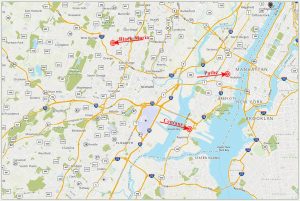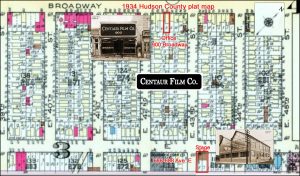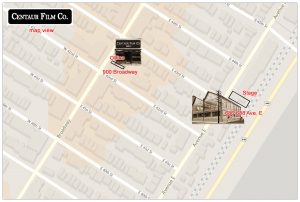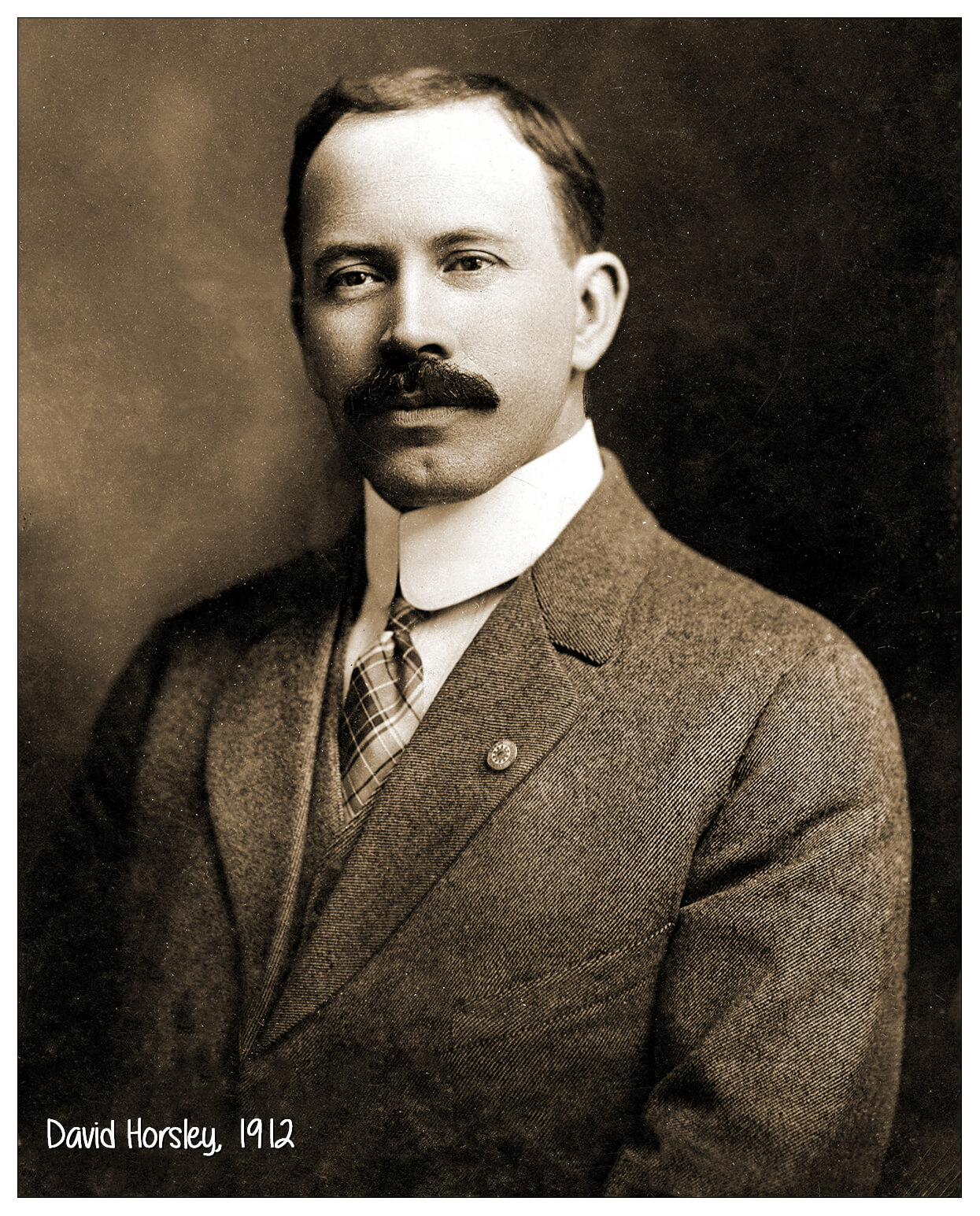Centaur Film Co.
Before Fort Lee there was Bayonne
New Jerssey's Second Studio
Click to enlarge
Related Pages:
- Fort Lee main page
- David Horsley
- Nestor Film Co.
- Universal Pictures
900 Broadway, Bayonne (office)
686-688 Ave. E, Bayonne (stage)
active 1907-1917
Centaur has a unique distinction in New Jersey film history. It was the second studio built in New Jersey, Edison's Black Maria being the first. It's owner, David Horsely, a renegade from the start, might qualify as the first true independent movie producer as all the other major movie companies were tied to Edison's Patents Trust (the MPPA) paying Edison for use of Edison's patents for equipment. Horsley used self-made bootleg equipment, not wanting to pay Edison a dime. He made equipment for other renegades.
The history of Centaur is a bit sketchy, but it appears that it began in a small office building (22 ft. wide and 52 ft. long on a lot that is 25'x100'). That building still stands today and is a dental office. At some point (date unknown) Horsely built a stage just down the block (see it on the map).
Centaur was formed by David Horsley in 1907, who was very key to the development of Hollywood. The story goes briefly like this: Centaur produced as many as 3 films a week, but was being hounded by Thomas Edison for patent infringement, as were other East Coast movie makers. Horsley became part of the industry's migration to California in ca 1910-1911 to evade Edison's Motion Pictures Patent Trust detectives.
Centaur Film Company's small building on Broadway started as a small studio, then later became the company offices. and as near as I can tell, it also doubled as the film processing lab (a field that is brother, William became a master of in Hollywood). The stage at 686-688 Avenue E was constructed ca 1914 using funds from the sale of Horsley's share of Universal stock to Carl Laemmle. Measuring 75'x100', it housed production, developing, editing, and shipping facilities. Constructed of steel and glass, Horsley could turn out 125,000 feet of film a week in the new studio.
Horsley fled New Jersey for the warm climates of California, and out of the way of the Edison detectives. He set up shop as Nestor Studios in the Blondeau Tavern at Sunset and Gower, in Hollywood, making this the very first studio in Hollywood proper (although studios existed in other parts of L.A. and Southern California). In short order the tavern was leveled and permanent open air stages were built. It was expanded over a period of years eventually becoming CBS's first west coast studio.
The legacy continues: Horsley merged his Centaur Films and Nestor Films, along with several other small studios including Carl Laemlle's Independent Moving Picture Co. (IMP) and Dintenfass' Champion Studio. The merged firm purchased Horsley's large ranch property which became Universal Studios, one of the largest film companies in the world.
When Horsely returned to California in 1915, Mark Dintenfass' Vim Comedies briefly occupied the studio before he sold the stage building to the Cello Film Company (1917), who, in turn, leased the single stage studio to King-Bee that year (King-Bee's owner, Louis Burnstein, and Mark Dintenfass were partners in Vim Comedies before they split).
In 1917, the studio caught fire and the building went up in a blaze. Two employees died.








